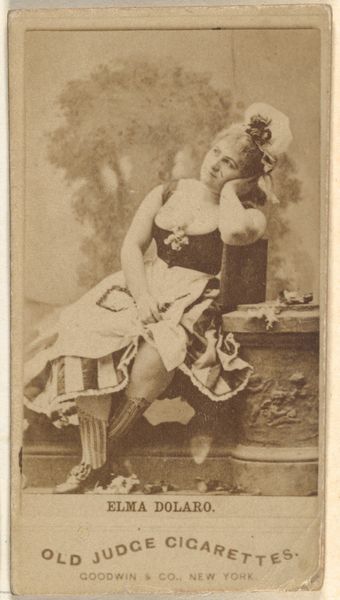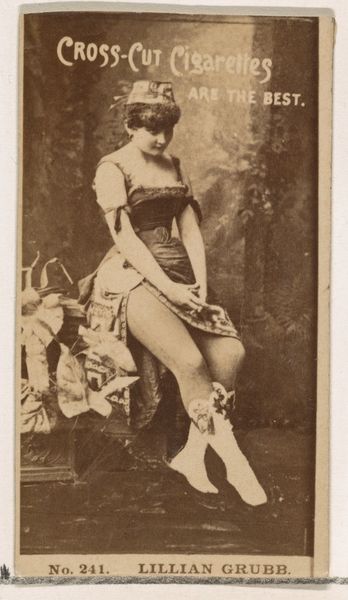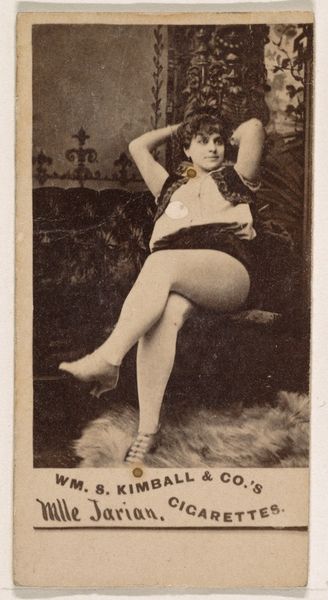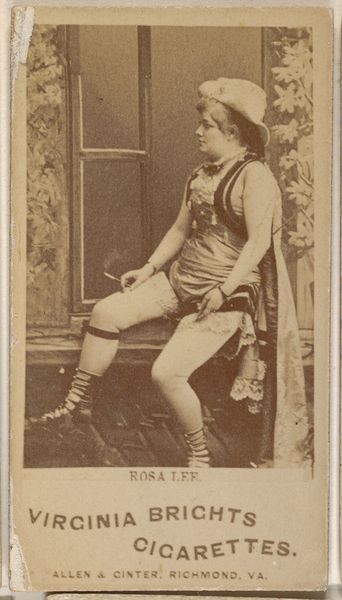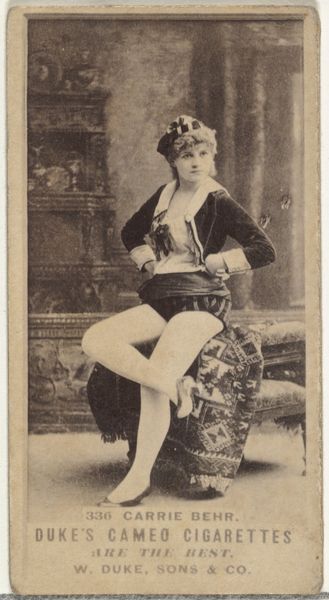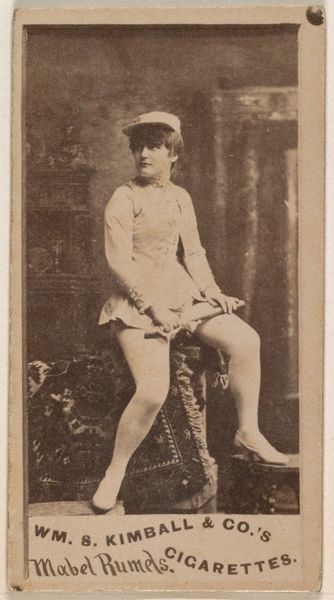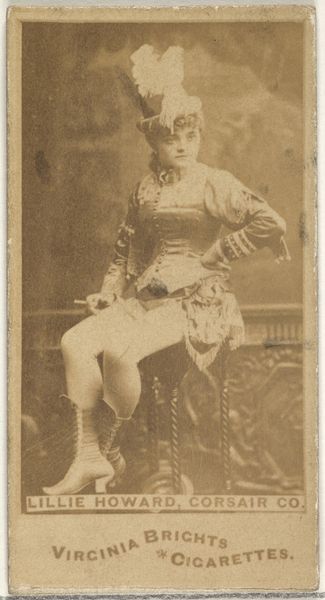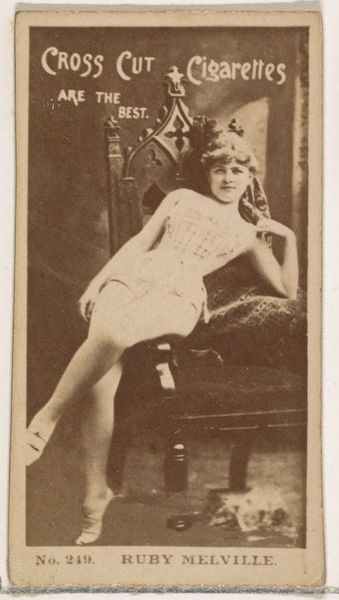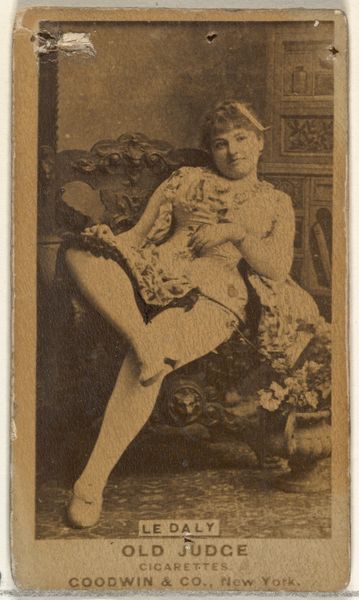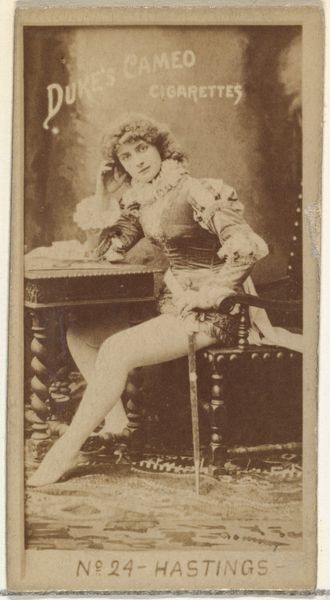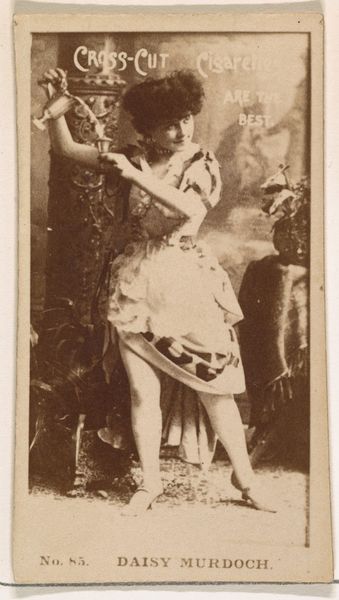
Campbell, from the Actors and Actresses series (N171) for Gypsy Queen Cigarettes 1886 - 1890
0:00
0:00
Dimensions: sheet: 2 11/16 x 1 3/8 in. (6.9 x 3.5 cm)
Copyright: Public Domain
Editor: Here we have "Campbell, from the Actors and Actresses series (N171) for Gypsy Queen Cigarettes," made between 1886 and 1890. It's currently housed at the Metropolitan Museum of Art. It's a vintage print, and what immediately strikes me is the unusual framing and the flatness of the image. It's quite different from the portraiture I usually see. What are your initial thoughts on the composition? Curator: Observe the interplay of lines and shapes, notably the subject's pose juxtaposed with the sharp, almost geometric shapes of the furniture and fan. How does the artist negotiate depth in such a confined picture plane, given that photography is the medium here? Editor: It’s interesting you mention the geometric shapes, as there is such a strong contrast between those and the soft frills of her hat and dress. It almost feels intentionally discordant. Curator: Indeed. Now, consider the tonal range. The limited grayscale and sepia tones certainly influence the overall impact. Do you see how these limited tones emphasize certain textures, drawing our eye to specific points, thereby directing the viewers gaze. Editor: I do. The texture of her dress is much more evident with that monochromatic effect. It also simplifies the reading of the form. The shadows give just enough information about volume. Curator: Precisely. This reduction invites closer examination of the lines forming her expression. Also note how her gaze and posture create a distinct visual rhythm across the surface. The artist's strategic choices evoke depth, challenging conventional notions of the photographic portrait and transforming this advertising card into something worth much greater consideration. Editor: That’s fascinating, looking at it purely from the way the subject and shapes are positioned really reframes my view. I was initially concerned with her historical significance, but I now appreciate the pure aesthetic considerations. Curator: My point exactly. Each component part lends to the other, giving form to a whole new perspective, from historical token, to a new discourse on the nature of shape and tone.
Comments
No comments
Be the first to comment and join the conversation on the ultimate creative platform.

